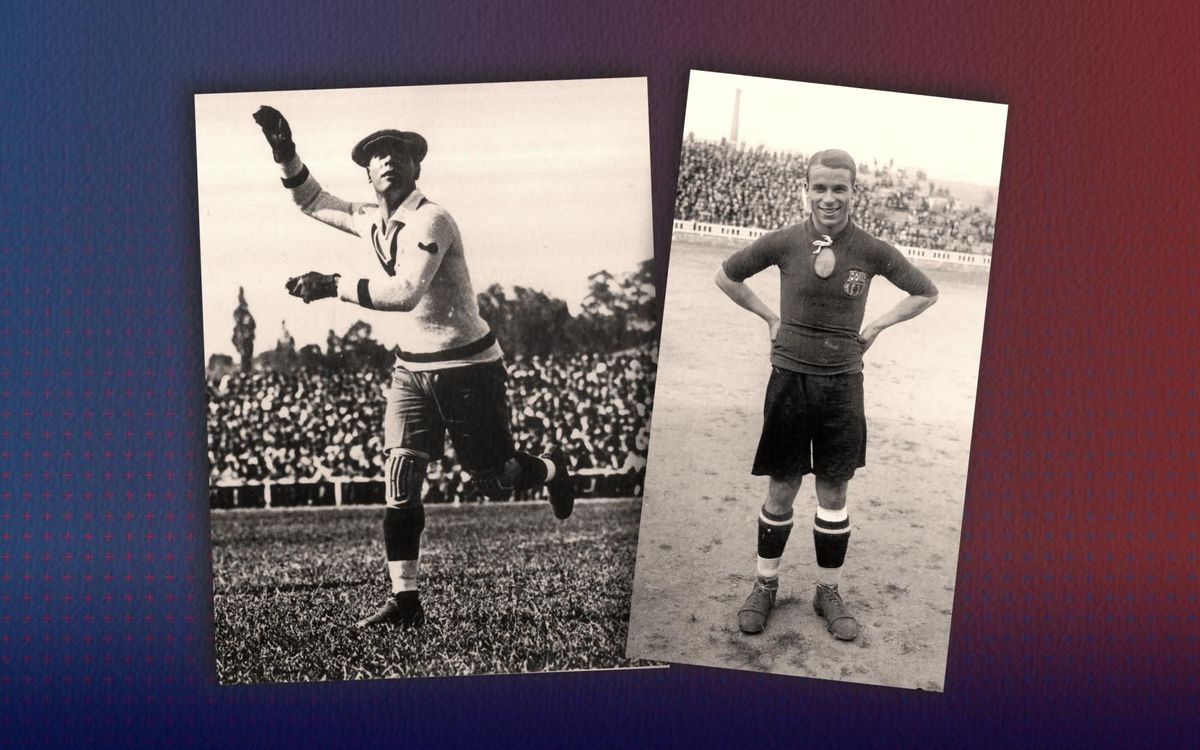100 years since Josep Samitier and Ricardo Zamora made their debuts
- label.aria.viber Viber
- label.aria.whatsapp WhatsApp
- label.aria.twitter Twitter
- label.aria.facebook Facebook
- label.aria.messenger Messenger
- label.aria.link label.aria.tick Copy link
One hundred years ago to this day, on 31 May 1919, FC Barcelona played a friendly at the old Carrer Indústria ground against an international XI made up of players from the allied nations that had recently won the First World War (Frenchmen, Belgians and Englishmen).
It was more of a symbolic occasion than anything, with plenty of waving of the respective countries’ national flags, and the result, a 2-0 win for Barça, was academic. But there was something about that game that made it a particular monumental occasion in the history of our club.
Golden goalie
This was the first appearance in a Barça shirt for Ricardo Zamora, the chain-smoking goalkeeper who had arrived at the club after winning the Catalan Championship with Espanyol. ‘The Dvine One’ was an extraordinary keeper, and it is after him that the Zamora Trophy, still awarded today to the best goalkeeper of the season, takes its name. After three years at Barça, Zamora returned to Espanyol, and ended his career playing for Real Madrid.
Fast forward
But although it was Zamora that the fans had mainly come to see, by the end of the game, another debutant also had them talking. A 17-year-old by the name of Josep Samitier dazzled on the field, and scored the second goal of the day with a splendid header from a corner.
Samitier (1902-1972) was destined to become Barça’s most legendary player of the early 20th century, and the icon of the club’s first ‘Golden Era’ in the 1920s. Not only was he a wonderful player, but he also oozed charisma off the pitch, was an absolute gentleman and was relentlessly passionate about all things Barça.
He was ahead of his time in many respects, and he was such a crowd-puller that he is said to be the main reason why the club was forced to abandon Carrer Indústria and build a bigger and better home at Les Corts. ‘Sami’ would remain in the team through to 1932, playing 504 games and scoring a fabulous 361 goals.
With such nicknames as the ‘Human Lobster’ and ‘The Magician’, Samitier had footballing fantasy at his feet. Not only did he have pace and skill, as much with his left foot as with his right, he was also famed for his extraordinary jumping ability – making him almost impossible to beat in the air. There was something anarchic and improvised about the way he played, making him a constant headache for opposing defenders to read. Quite simply, he was the footballing showman of the age.
Although he was originally played in midfield, he was such a prolific goalscorer that he would soon be used as centre forward –pumping the goals in with power and accuracy, and frequently appearing from nowhere to slam in diving headers.
Also a member of the first ever Spanish national team, which went to the Antwerp Olympics in 1920 (effectively the World Cup at the time) and came back with the silver medal, many believed he was the world’s greatest striker of his age.
After helping Barça to the Liga title in its inaugural season of 1929, and also winning five Spanish Cups and twelve Catalan Championships, a dispute with the management led to him departing for Madrid in 1932. He’d end up spending most of the Spanish Civil War years in exile in France, but in 1944 was back at Barça, this time as manager, and leading the club to its second league title.
- label.aria.viber Viber
- label.aria.whatsapp WhatsApp
- label.aria.twitter Twitter
- label.aria.facebook Facebook
- label.aria.messenger Messenger
- label.aria.link label.aria.tick Copy link

